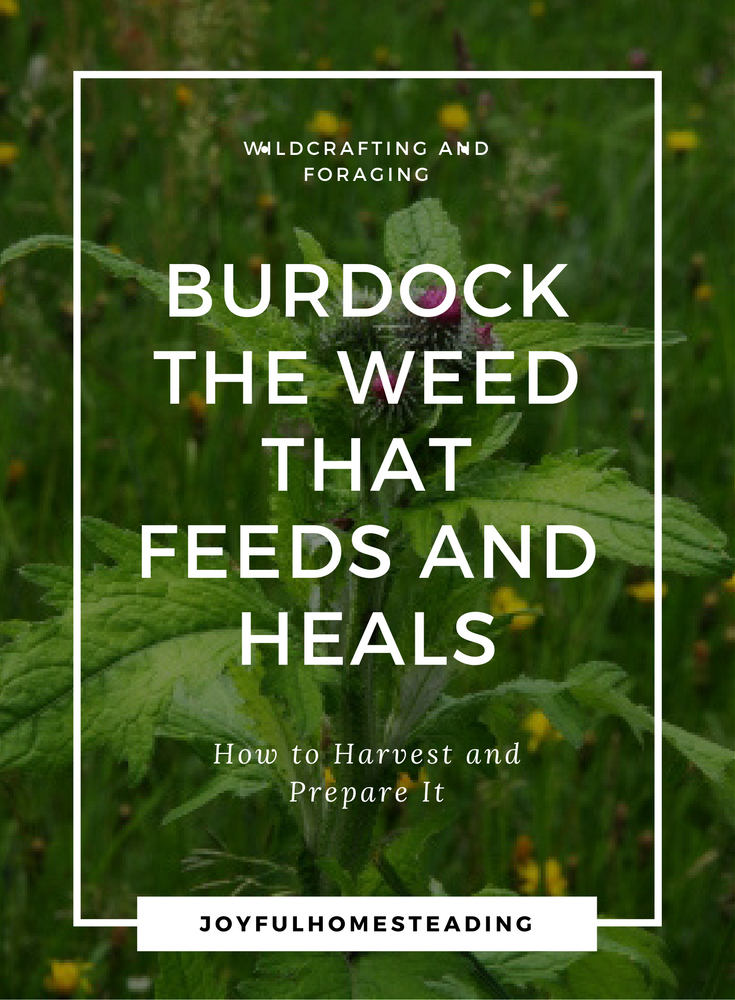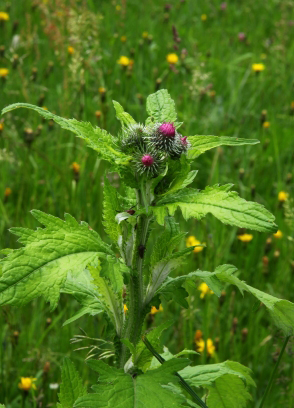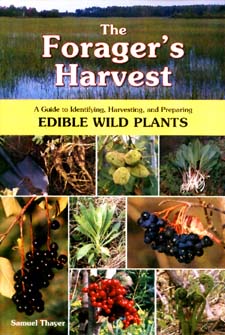Burdock Plant is a Surprisingly
Valuable Edible Wild Food
A burdock plant - ever brushed against one? I have plenty of times, and there's nothing more annoying than picking those pesky stick-tights from a sweater or your socks. But the common burdock is also valuable for food and for medicine. Here are some of the benefits of burdock you may not be aware of.

What is Burdock?
It is commonly considered a weed that prefers disturbed, tread-upon soil. The plant frequently shows up in backyards, vacant lots, railroad tracks, and other common, sometimes abandoned areas. Yet the burdock is actually an escaped domestic vegetable grown widely in Japan and known there as "gobo."
And while some give credit to aliens for giving us Velcro, it is actually the burs from the humble burdock that inspired inventor George de Mestral to create it.

The burdock plant is a large weed with giant, sometimes two-foot-long, wedge-shaped leaves that are heart-shaped at the stem, and purple flowers that dry and turn into burs that cling to clothes and socks, and making life miserable for anyone who has the misfortune to get too close.
But those nasty burs and bitter covering can be forgiven once you realize the value of the burdock plant. The root, stem, and even petioles (the stalk of the leaves, attaching the blade to the stem) make tasty and nourishing food.
How to Harvest Burdock
For the bad rap it receives, the burdock plant has a wealth of tasty, nourishing food, according to Samuel Thayer, author of the book, The Forager's Harvest. Thayer says you should treat the root of the burdock a bit like you would a potato. But keep in mind that, unlike the potato, small is definitely better when it comes to burdock. Look for a cluster of burdock plants with fairly small rosettes. A large plant will have massive roots that will be too hard to dig out.
Choose an area, if you can, where several medium-size rosettes are
located together and dig a hole about three feet deep in the area between
these plants.
Thayer's book, The Forager's Harvest, is a great reference for finding edible plants.
Then gently pull the neighboring roots toward you, being careful not to break the roots. Ideally, you want roots that are 14-26 inches long, about one and a half inches wide, light brown to creamy in color and solid all the way through.
Scrub and rinse the root, cutting off any dirty ends, hollow sections and coarse parts, and then scrape off the outside with a knife or vegetable peeler. You can boil the roots, then mash them and enjoy them with salt and butter. Or you can fry the mashed burdock roots like you would hash browns. You an also eat burdock roots raw, or chop and roast them, using them as a coffee substitute.
When to Harvest the Burdock Plant
Harvest these roots in the spring, early summer or fall.
The leaves of the common burdock are too bitter to eat and will also leave a bitter residue on your fingers. But the petioles are long and thick on a burdock plant, making it worth the effort. Carefully scrape off the bitter, outer skin, chop it into smaller pieces and then boil it. It's fibrous like celery. The older the plant is, the tougher and more fibrous the petioles will be, so harvest them in the early summer before the leaves are fully grown.
You can also eat the core of the stalk of the burdock plant. Harvest these several weeks before the flowers appear, when the shoots are between one and three feet tall and not yet stiff. Cut the stalks at the base, pull off any leaves or small side branches and then carefully peel off the bitter and stringy rind. Thayer says he does this by biting onto the fibers at the base of the stalk and then pulling the whole stalk away from his teeth. Use a carrot peeler to get the remaining bits.
Remove the entire outer green layer, which is too bitter to eat. The edible part is an opaque whitish color that is 6 to 20 inches in length. You can eat this raw, but it is far better cooked. Boil it for a long time until it is soft.
Benefits of Burdock Root
Burdock root has been used as medicine for centuries. It is loaded with antioxidants that can help prevent cancer and also has antibacterial and anti-fungal properties. Make burdock tea and drink it to reduce liver damage from toxic chemicals or apply the cooled tea externally to treat skin conditions.
Storing Tips
Do not rinse the root until you are ready to use it. It wilts quickly after it has been washed. The white flesh immediately discolors once peeled, so soak it in mild vinegar solution until you are ready to cook it to maintain the color.
Learn More About Self Sufficient Living








New! Comments
Have your say about what you just read! Leave me a comment in the box below.